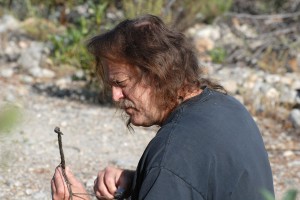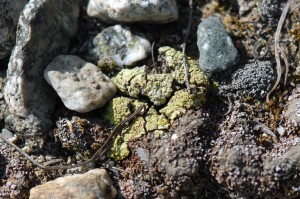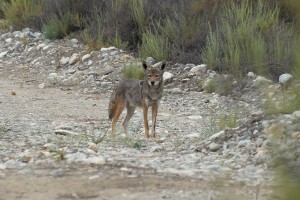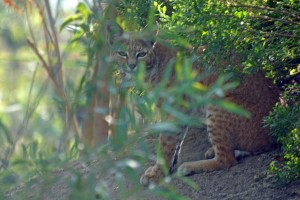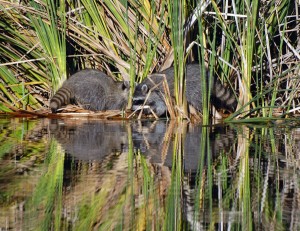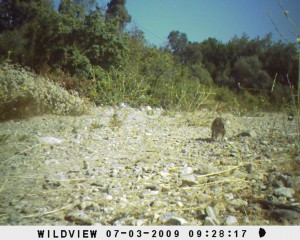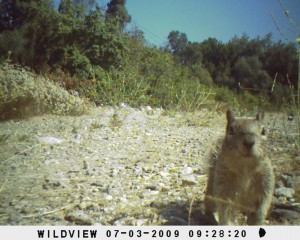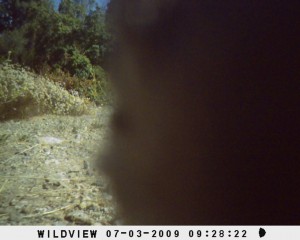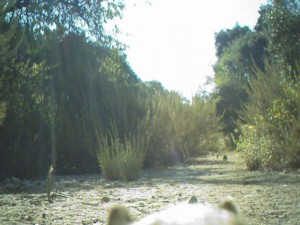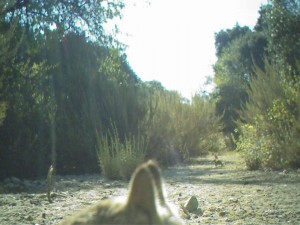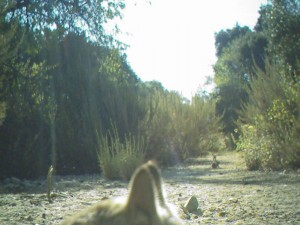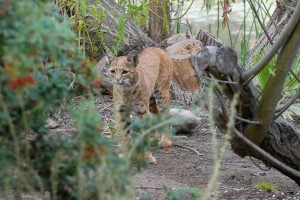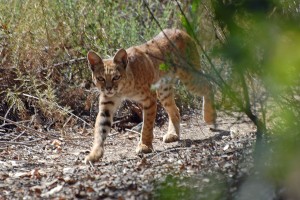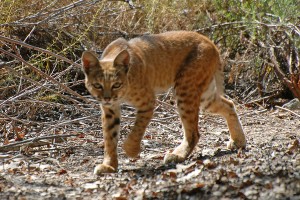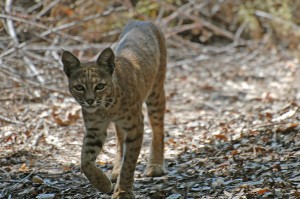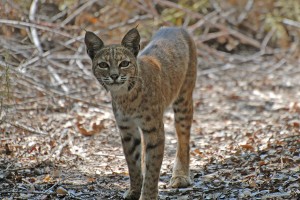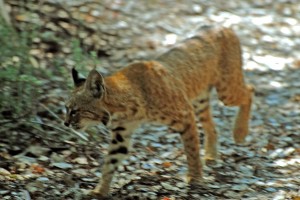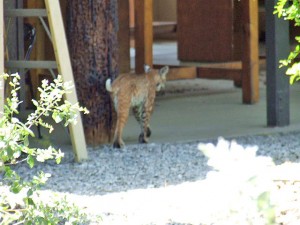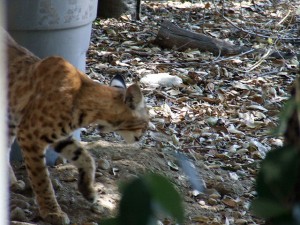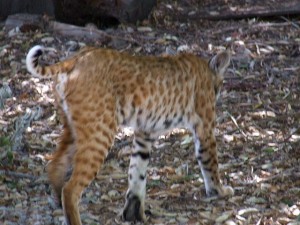The proliferation of digital trail or scouting cameras now makes remote photography an affordable tool for wildlife research. Primarily serving hunters, this cottage industry offers choices from $70 to $500 depending on image quality, speed, video capability, standard or infared flashes and ruggedness. BFS seems like such a logical place, given its size and boundaries, to explore what lives here and what they do when humans aren’t around. Yet, it was HMC student Clint Leach who first thought of employing the cams just this spring! Working with his adviser, biologist Cathy McFadden, Clint found an basic model for under $70. The department purchased several units for his project.
The photos presented here are from one of those cameras currently on loan to BFS. The model is the Wildview EZ-CAM, also referred to as the “bubba cam” (on their website) for obvious reasons — even bubba can set this one up. The only parameter one can manually adjust is the date/time stamp. Everything else is preset. Resolution is okay, but you won’t be winning photo contests with bubba cam. It operates on infared or heat sensing. The camera is slow to actually snap a photo after sensing a living object, about a 2-2.5 second interval, which unfortunately is enough time for the subject to enter and exit frame without being caught on “film”. The result are many shots without the animal that triggered the mechanism. When it does shoot, it does so in a burst of 3 shots at 2 second intervals. The camera then requires a minute or so to reset. There is a flash unit for night shots, but it is VERY intense and produces really bad quality results, often washing out the subject.
Okay, to the photos. These were taken Wednesday, July 1st (ignore the wrong date setting) looking from the clearing on the south end of the lake to the east along the trail. Camera is at ground level. To get the best effect, click on each photo, save it to your hard drive and view each “trio” in quick succession. This will give some motion effect from the burst.
First set is of a coyote, taken at approximately 7 AM.
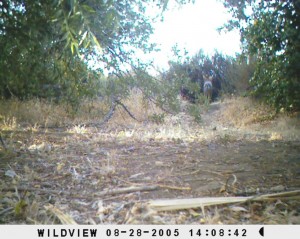
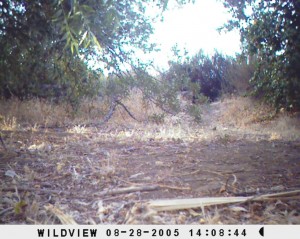
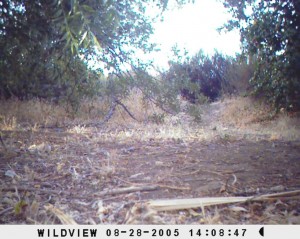
As you can see, the coyote looks out over the crest and moves east out of frame.
The next set, taken at approximately 9:40 AM shows the mother bobcat stationary, also looking east. Viewing these in rapid succession allows you to see that the cat has spotted something of keen interest, whether potential prey or predator.
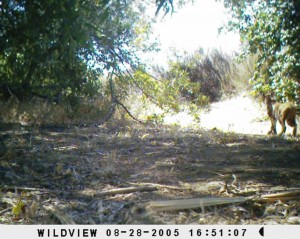
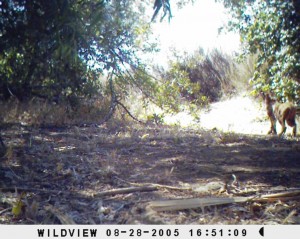
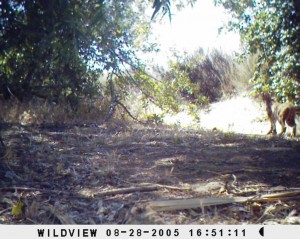
The last set shows a coyote scanning, sniffing and exiting the area of the clearing. Taken at approximately 12:40 pm.
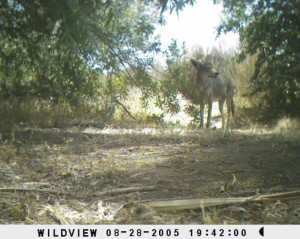
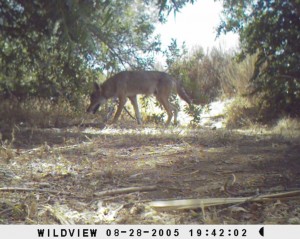
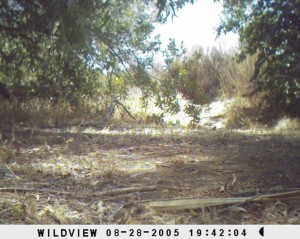
The coyotes were certainly out and about that day. I saw one by my residence and another on the road toward the lake, plus these remote shots. The greatest cause of mortality in bobcats, far and away, is death by human — either being shot or run over. However, coyotes will certainly take bobcat cubs, especially ones this young and may have caught the scent. Perhaps that is what the mother bobcat was tracking. Whether the young bobcats survive remains an open question. They have not been spotted since the trail cam photos posted earlier this week.
One last note on “bubba cam”. The manual suggests mounting 2-4 feet off the ground. However, this inexpensive camera simply is not very sensitive to small body masses. Yeah, if you’re looking for moose or elk or homo sapiens, that’s fine. All the successful shots of coyote and bobcat were taken with the camera sitting directly on the ground. It is capturing squirrels and rabbits at that level as well.
The location of the two cameras are changed every two or three days. Anything new of interest will be posted as it comes in. I am also purchasing a more advanced camera model that uses an IR flash system, avoiding disturbing the animals with bright night flashes. It also has a 0.5 second response from sensing to shutter snap and takes videos. Using that in conjunction with several bubba cams may yield further informative results. We did have student reports this past spring of two foxes in the central west end of BFS, which bears further investigation.
Tags: bobcat, Canis latrans, coyote, Lynx rufus, photography
